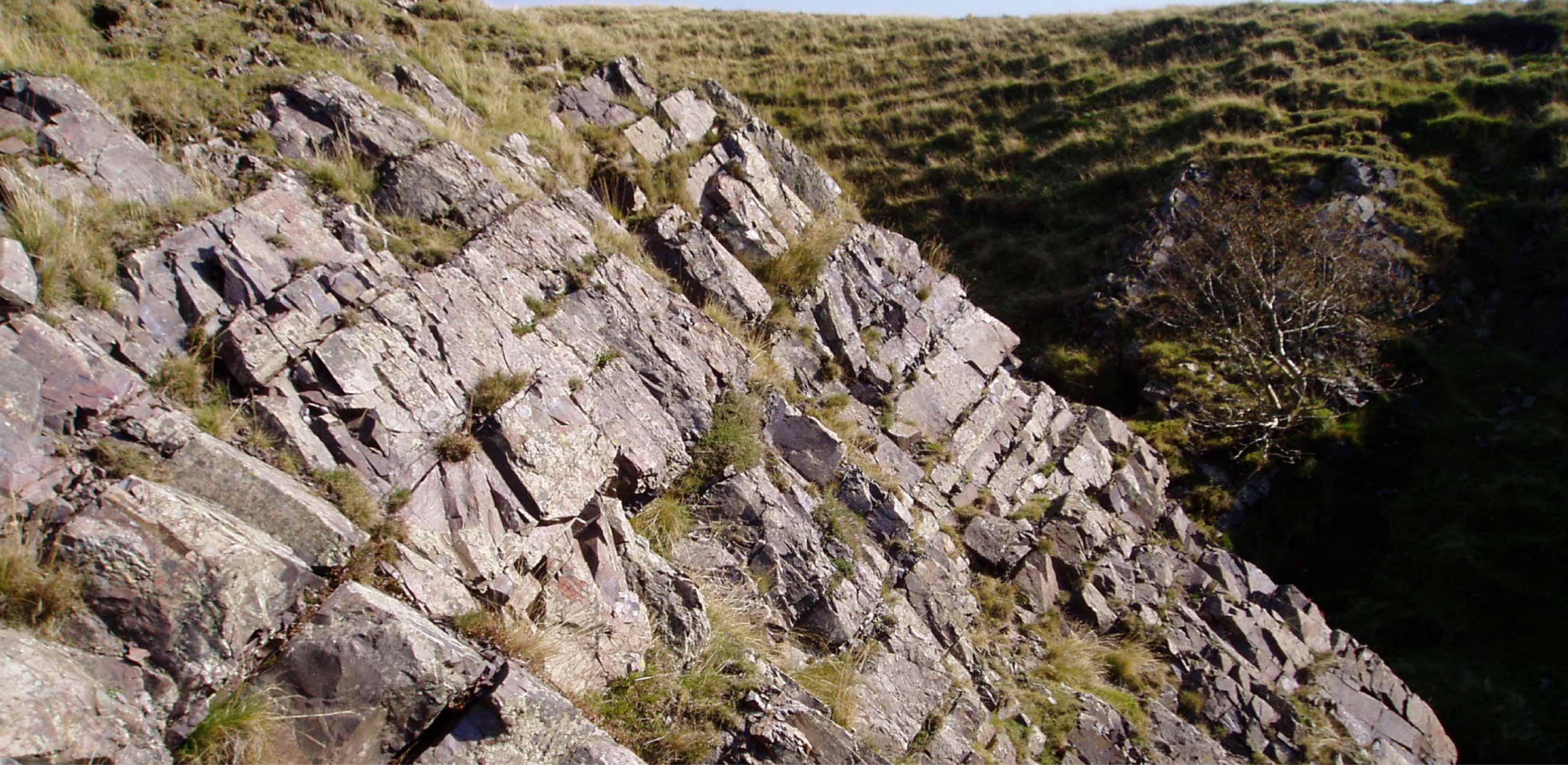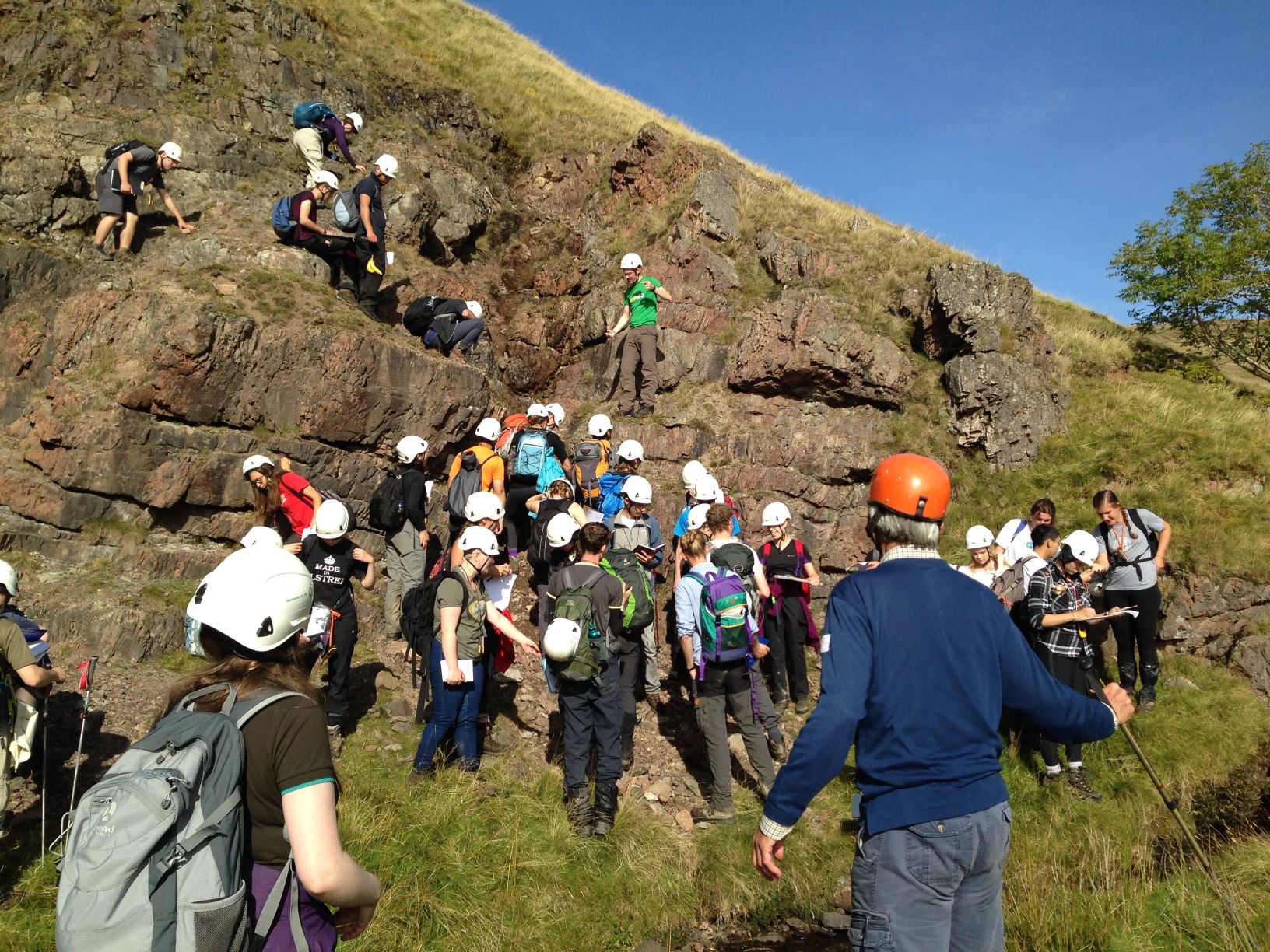
Submitted by Dr C.M. Martin-Jones on Tue, 09/02/2021 - 12:45
The Geomagnetic Polarity Timescale that charts the reversals of Earth’s magnetic field is well established for the past 200 million years, but increasingly patchy before that. In recent papers in Palaeogeography, Palaeoclimatology, Palaeoecology, scientists have reported the first reliable polarity timescale for later Ordovician to early Silurian time, about 470-430 million years ago. This interval is important for containing one of the three ice ages of the Phanerozoic.
The later Ordovician and early Silurian (about 470-430 million years) is of great geological interest, hosting one of the three Phanerozoic ice ages, the Early Palaeozoic Icehouse, culminating in latest Ordovician (Hirnantian) time. But, until now, there has been no reliable geomagnetic timescale with which to accurately date the interval.
Now a team led by Mark Hounslow (Lancaster University), and including Cambridge Earth Sciences’ Nigel Woodcock, has produced the first coherent geomagnetic polarity record through this period.
The Earth’s magnetic field reverses its polarity on timescales from tens of thousands to tens of millions of years. These reversals are most famously recorded by the magnetic stripes of the ocean floor, oriented minerals in the spreading ocean lithosphere locking in the magnetic field like a tape recorder. Radiometric dating of the rocks, both on the sea floor and sections exposed on land, means a Geomagnetic Polarity Timescale of these reversals can be built up.
These on-land sections also allow the geomagnetic timescale to be extended back before the beginning of the Jurassic (about 200 million years), the age of the oldest Pacific and Atlantic crust. However, this on-land record gets more problematic further back in time, due to distortion of the original magnetic signal as rocks get buried and heated.
The new study measures remanent magnetism in oriented rock samples from eight on-land European localities: four from the Britain, three from Poland and one from Lithuania. Nigel directed the sampling of the Backside Beck section in the Howgill Fells of Cumbria, one of the most complete and best dated sections in the UK through Icehouse times.
The Backside Beck section is known to generations of Cambridge students. Since the early 1970s, Nigel Woodcock and the late Barrie Rickards led the annual field mapping course to this region, based in nearby Sedbergh. Backside Beck provided a specially challenging day’s traverse, where the stories of the Early Palaeozoic Icehouse and the incipient closure of the Iapetus Ocean could be read from a section entirely made of mudstone! It is Barrie’s meticulous biostratigraphy through these mudstones, established from fossil graptolites, that allows the palaeomagnetic samples to be tied into the global chronostratigraphy – the radiometrically determined age in millions of years.
Hounslow, M.W., Harris, S., Wójcik, K., Nawrocki, J., Ratcliffe, K., Woodcock, N.H., Channell, J.E.T and Montgomery, P. A geomagnetic polarity stratigraphy for the Middle and Upper Ordovician. Palaeogeography, Palaeoclimatology, Palaeoecology (2021) https://doi.org/10.1016/j.palaeo.2021.110225.
Hounslow, M.W., Harris, S., Wójcik, K., Nawrocki, J., Woodcock, N.H., Ratcliffe, K. and Montgomery, P. Geomagnetic polarity during the Early Silurian: the first magnetostratigraphy of the Llandovery. Palaeogeography, Palaeoclimatology, Palaeoecology. (2021). https://doi.org/10.1016/j.palaeo.2021.110245

